About Synthetic Marijuana Abuse
Learn More About Synthetic Marijuana Abuse
Synthetic marijuana, which is often also referred to as spice or K2, is a lab-created substance that was developed to simulate the effects of natural marijuana. Though it is often marketed as a safe or benign alternative to natural marijuana, synthetic marijuana can be a much more dangerous substance that can produce a range of negative outcomes. Synthetic marijuana interacts with the same areas of a user’s brain that are impacted by tetrahydrocannabinol, or THC, which is the primary psychoactive component of natural marijuana. However, the effects of abusing spice or K2 can be more intense, longer-lasting, and much more damaging than what usually results from abusing natural marijuana.
Because the type, quantity, and quality of chemicals in synthetic marijuana can vary widely from batch to batch, it is impossible to predict how a person’s body will react. As a result, synthetic marijuana abuse has led to increasing numbers of overdoses, hospitalizations, and even deaths. In addition to putting themselves in danger of the immediate damage that can result from one experience with synthetic marijuana, individuals who use this unpredictable substance also risk the onset of a wide range of potential long-term effects that the relative newness of this drug has thus far prevented researchers from fully understanding.
Though synthetic marijuana can clearly jeopardize the wellbeing of those who abuse it, the unfortunate truth is that it remains a popular recreational substance for adolescents, teenagers, and adults. Thankfully, comprehensive treatment programs have proven to be effective in the effort to help people who have become trapped in the downward spiral of synthetic marijuana abuse. With professional help, individuals can overcome the compulsion to abuse this substance and can learn how to once again live a healthy, drug-free life.
Statistics
Synthetic Marijuana Abuse Statistics
Data collected for the annual Monitoring the Future (MTF) report indicates that about 14 percent of male high school seniors and 8 percent of female high school seniors in the United States have abused synthetic marijuana at least once in the past 12 months.
Demonstrating the dangers of this substance, the Drug Abuse Warning Network (DAWN) has reported that the abuse of synthetic marijuana is a contributing factor in more than 11,000 visits to emergency rooms each year. Three of every four of these ER visits involved a patient between the ages of 12 and 29. Also, 77 percent of these visits were made by male patients.
From 2011 to 2014, the American Association of Poison Control Centers (AAPCC) documented 18,548 cases involving synthetic marijuana abuse, an average of 4,637 cases per year. In just the first four months of 2015, the AAPCC had already recorded 2,413 cases related to synthetic marijuana. If this rate continues through the rest of the year, 2015 will top 7,000 poison control cases involving synthetic marijuana.
Causes & Risks
Causes and Risk Factors for Synthetic Marijuana Abuse
Synthetic marijuana is a relatively new drug, and thus the amount of research conducted on its abuse and addiction is relatively small. However, decades of research into substance abuse and substance use disorders has indicated that most cases are the result of a combination of genetic and environmental influences.
Genetic: Multiple studies strongly suggest that a predisposition to developing an addiction can be hereditary. Individuals whose parents or siblings have struggled with chemical dependency are much more likely to have similar problems than are people whose family history does not feature drug abuse or addiction. This hypothesis is supported by studies involving twins who were raised separately and adopted children who were raised alongside their adoptive parents’ biological offspring. Also, technological advances have allowed genetic researchers to identify several individual genes and gene clusters that appear to be influential in determining whether or not a person will develop a substance use disorder.
Environmental: The decision to start abusing substances, such as synthetic marijuana, is often influenced by several environmental factors. For example, individuals who grow up in households or neighborhoods where substance abuse is common are more likely to engage in similar behaviors than are people who were raised in drug-free environments. Other environmental factors that can lead to substance abuse include being the victim of abuse, neglect, or violent crime, being exposed to stresses that exceed one’s coping abilities, experiencing the loss of a loved one through separation, divorce, or death, and associating with friends or colleagues who engage in recreational drug abuse.
Risk Factors:
- Age (most cases of synthetic marijuana abuse involve individuals under the age of 30)
- Gender (synthetic marijuana abuse is more common among men than among women)
- Family history of substance use disorders
- Family history of mental illness
- Exposure to substance abuse at a young age
- Lacking effective parental involvement during childhood
- Being abused or neglected during childhood
- Witnessing or experiencing a traumatic event
- Having poor stress-management skills
- Living in poverty
- Living or working in a high-stress environment
- Engaging in other types of substance abuse
- Associating with peers who abuse alcohol or other drugs
Signs & Symptoms
Signs and Symptoms of Synthetic Marijuana Abuse
The appearance of synthetic marijuana abuse can vary depending upon a number of factors, including the quality of the drug, the amount that a person has been abusing, the length of time that he or she has been engaging in this behavior, and the presence of other substances of abuse. Possible signs that may indicate the presence of synthetic marijuana abuse include the following:
Behavioral symptoms:
- Declining performance at work or in school
- Frequent unexplained absences from work or school
- Lies or other deceptions regarding one’s actions and whereabouts
- Abandonment of friends for new peer group
- No longer participating in activities that were once enjoyed
Physical symptoms:
- Increased heart rate
- Increase or decrease in blood pressure
- Watery or bloodshot eyes
- Numbness in hands and/or feet
- Muscle spasms
- Excessive perspiration
- Nausea
- Lack of personal hygiene
Cognitive symptoms:
- Depersonalization
- Confusion and disorientation
- Psychosis
- Hallucinations
- Delusions
- Paranoia
Psychosocial symptoms:
- Dramatic mood swings and changes in demeanor
- Excessive elevation of mood
- Periods of emotional detachment or numbness
- Agitation and irritability
- Profound sense of anxiety and/or depression
- Loss of interest in events, activities, or issues that were once important
Effects
Effects of Synthetic Marijuana Abuse
As is the case with the signs and symptoms of synthetic marijuana abuse, the effects of both short-term and chronic abuse will also vary depending upon a number of factors. Long-term abuse of synthetic marijuana is also difficult to characterize because the recent appearance of this drug means that there have been limited opportunities to study and document this phenomena. That said, the following are known to be among the potential effects of synthetic marijuana abuse:
- Immediate need for hospitalization
- Academic failure
- Occupational failure, possibly resulting in job loss and chronic unemployment
- Financial problems
- Legal problems
- Family dysfunction
- Strained or lost personal relationships
- Suicidal ideation and attempts
- Engagement in self-harm
- Loss of self-esteem and self-worth
- Cognitive impairment
- Cardiac arrest
- Stroke
- Death
Co-Occurring Disorders
Synthetic Marijuana Abuse & Co-Occurring Disorders
It is not uncommon for people who abuse synthetic marijuana or other drugs to also be struggling with a co-occurring mental health disorder. The following are among the conditions that have been known to afflict individuals who are also abusing synthetic marijuana:
- Anxiety disorders
- Bipolar disorder
- Major depressive disorder
- Persistent depressive disorder
- Posttraumatic stress disorder (PTSD)
- Attention-deficit/hyperactivity disorder (ADHD)
- Oppositional defiant disorder (ODD)
- Other substance use disorders
Withdrawal
Effects of Synthetic Marijuana Withdrawal & Overdose
Effects of synthetic marijuana withdrawal: When a person has become dependent on synthetic marijuana, abruptly stopping or drastically reducing the use of this drug will likely result in the onset of various unpleasant withdrawal symptoms, including the following:
- Anxiety
- Extreme fatigue and lethargy
- Powerful drug cravings
- Nausea
- Vomiting and diarrhea
- Hot/cold flashes
- Insomnia
- Psychotic episodes
- Suicidal ideation
Effects of synthetic marijuana overdose: Whenever an individual ingests a substance in an amount that overwhelms his or body’s ability to safely metabolize, he or she is at risk for overdose. Individuals who demonstrate the following symptoms after abusing synthetic marijuana may be in great danger and should be provided with immediate medical attention:
- Extreme confusion or disorientation
- Hallucinations
- Respiratory distress
- Seizure
- Stroke
- Cardiac arrest
- Coma
















